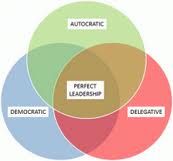by Charles Plant | Oct 26, 2012 | Leadership Development
I’ve been experimenting with infographics so for something different on a Friday, I attempted to boil leadership down to its simplest form and put it in an infographic.
In actual fact, leadership is very simple. It’s about meeting the needs of your followers. That’s it. That’s all there is to it.
The problem is that the people who follow you all have different needs and their needs will change depending upon the situation in which they find themselves in. The complexity in leadership comes in figuring out what peoples’ needs are and then figuring out how you’re going to meet them.
Here’s my take on what people need from a leader.

by Charles Plant | Oct 24, 2012 | Leaders
 James Dyson hit number 255 on Forbes list of billionaires with a net worth of $4.2 billion because he is good at problem identification.
James Dyson hit number 255 on Forbes list of billionaires with a net worth of $4.2 billion because he is good at problem identification.
He discovered the problem that all vacuum cleaners had by using his Hoover Junior vacuum cleaner which became clogged quickly and lost suction over time. Becoming frustrated with its performance, he emptied the bag to try to restore the suction but this didn’t work. When he opened the bag, he noticed a layer of dust inside. The mesh in the bag was clogged, preventing the machine working properly. In fact, the machine only worked properly with a fresh bag. This was the first root cause he identified.
He developed the cyclonic action used in all current Dyson vacuums to solve this problem but was unable to license this development to other vacuum cleaner companies. And why was that? Well, these companies made their money, not from selling vacuums, but from selling the bags that went with it. No wonder no one had tried to solve this problem before. Second problem identified.
“Be thankful for problems. If they were less difficult, someone with less ability might have your job.” James A Lovell
by Charles Plant | Oct 23, 2012 | Leaders
 One of the first steps in solving a problem is identifying the issues and if you can, the root cause. I’ve watched a bit of the presidential debates on TV and thought it would be interesting to see what Obama and Romney think the root causes are for America’s economic malaise. So I went trolling on their websites to see if I could identify what is the basis for one of the biggest differences between the candidates.
One of the first steps in solving a problem is identifying the issues and if you can, the root cause. I’ve watched a bit of the presidential debates on TV and thought it would be interesting to see what Obama and Romney think the root causes are for America’s economic malaise. So I went trolling on their websites to see if I could identify what is the basis for one of the biggest differences between the candidates.
In short, “Romney believes that the government is an impediment to economic growth and should mostly get out of the way. The president argues that the government plays a vital role in creating the foundation for a strong economy.” (www.washingtonpost.com) What is interesting here is that Romney is identifying a cause whereas Obama has not done so but jumps straight to a conclusion (of platitudes).
“President Obama has a plan to grow the economy from the middle class out, not the top down. We can’t just cut our way to prosperity, and we can’t go back to the same failed policies that caused the economic crisis and punished middle-class families.” (www.barackobama.com) “President Obama and Democrats are fighting to strengthen our economy further and create jobs for American workers by ending tax loopholes for corporations, providing tax cuts to small businesses, investing in a clean-energy economy, and putting Americans to work rebuilding our infrastructure. (www.democrats.org)
I’ve checked a bunch of websites and have yet to find anywhere that Obama has stated what he believes to be the cause of the failed recovery. He tends to blame everything on 2008 but can’t explain why there has been such a slow recovery.
“Mitt Romney will rebuild the foundations of the American economy on the principles of free enterprise, hard work, and innovation. His plan seeks to reduce taxes, spending, regulation, and government programs. It seeks to increase trade, energy production, human capital, and labor flexibility. It relinquishes power to the states instead of claiming to have the solution to every problem.” (www.mittromney.com)
To Romney, the government is the problem and he believes that high taxes, regulation, and federal meddling are hurting the economy. Very clear problem identification but altogether too easy an explanation when there are so many things that are contributing to the Great Recession.
You can’t solve a problem until you identify the root cause. Romney has trotted out a hoary shibboleth and Obama hasn’t even tried to identify the root cause. With this lack of vision, we’ll be lucky to see much economic growth over the next few years in the US.
A pox on both their houses.
by Charles Plant | Oct 19, 2012 | Research
Finally, following the last post in a series of four, we’re looking Participative Leadership, the third type of leadership studied by Kurt Lewin in 1939. This study of schoolchildren assigned to complete an arts and craft project, worked under three different types of leaders, an Authoritative Leader, a Delegative Leader and a Participative Leader.
Lewin’s research found that in general, participative leadership, or democratic leadership as it is often called, was the most effective style. These leaders encourage others in the group to participate but in most cases, maintain control over the final decision. Participative leadership results in followers who are engaged in the process of decision making, better able to support the decision and are more motivated and creative.
Participative leaders encourage group members to participate, but retain the final say over the decision-making process. Group members feel engaged in the process and are more motivated and creative. In his study, Lewin found that children in this group were less productive than those in the authoritarian group but their contributions were of higher quality.
What does all this research mean?
Some people believe that the best leadership style is a mix of the three styles. You may have seen the following venn diagram to represent leadership.

But this diagram is wrong. The best style isn’t a mix of all three styles.
If you go back to the first equation postulated by Lewin, he states that behaviour is a function of the person in the environment. Ultimately, the best style is the one that gets the best results in the particular environment and you may have to exhibit different styles of leadership to be effective in different types of situations.
by Charles Plant | Oct 18, 2012 | Research
 Following up on yesterday’s post on Authoritarian Leadership, we continue on Kurt Lewin’s study of leadership to look at Delegative Leadership, sometimes known as Laissez-Faire Leadership.
Following up on yesterday’s post on Authoritarian Leadership, we continue on Kurt Lewin’s study of leadership to look at Delegative Leadership, sometimes known as Laissez-Faire Leadership.
The second group of children in his study of leadership worked under a delegative leader to complete an arts and crafts project. Lewin’s research found that these kids were the least productive of all groups. They made more demands on the leader, showed little cooperation among each other and were unable to work independently.
These abysmal results are a function of delegative leadership wherein the leader gives little or no guidance to group members. It is perhaps unfair to have looked at this research using children as it doesn’t take into account some work situations where delegative leadership is essential. If you lead a team of very accomplished and productive people, then you had better get out of their way and let them do their thing. This is especially true where they all have some sort of technical expertise in which you lack.
Unfortunately though, in many cases, this style of leadership can lead to people having poorly defined roles and little motivation.
Float and Dive leadership
While Lewin didn’t study this type of leadership, Float and Dive Leadership is a style where a leader is sometimes authoritative and sometimes delegative. Where the subject interests the leader, he or she can be authoritative and where the subject matter is of no interest, the leader abdicates. This is sometimes floating above the surface and sometimes taking a deep dive.
The style is the worst of both worlds, especially when a team member doesn’t know the issues upon which the leader will float and the issues upon which he or she will dive. A follower is left with managerial whiplash, sometimes micromanaged and sometimes left to wander in the wilderness.





